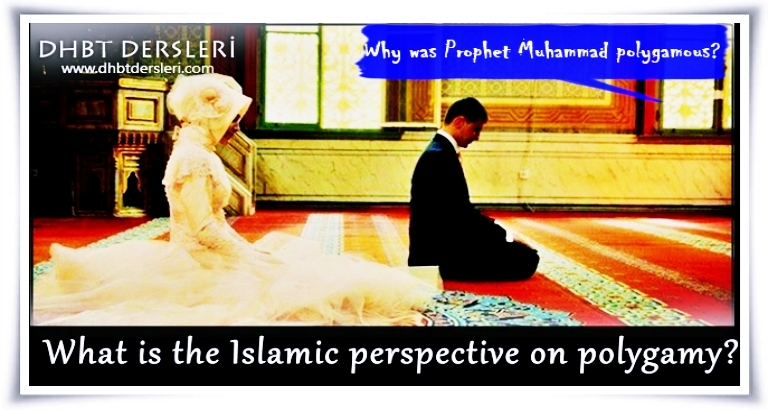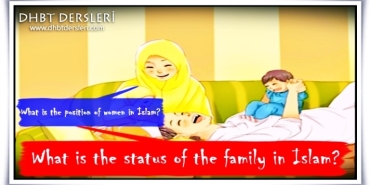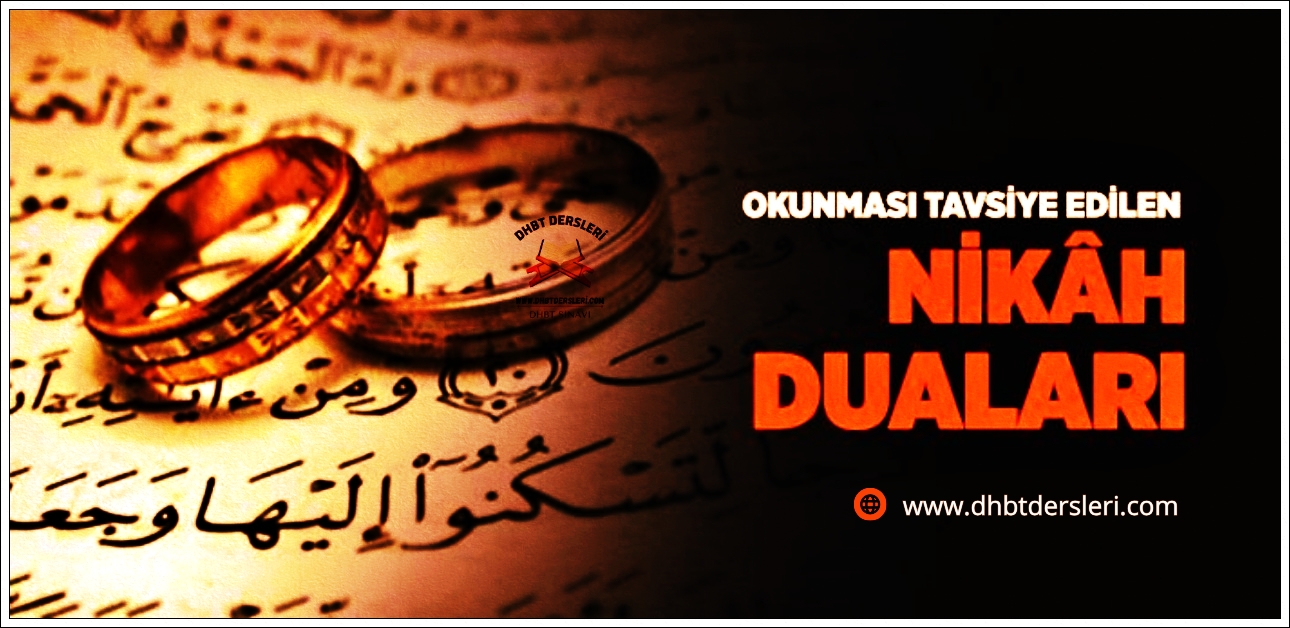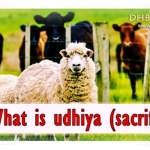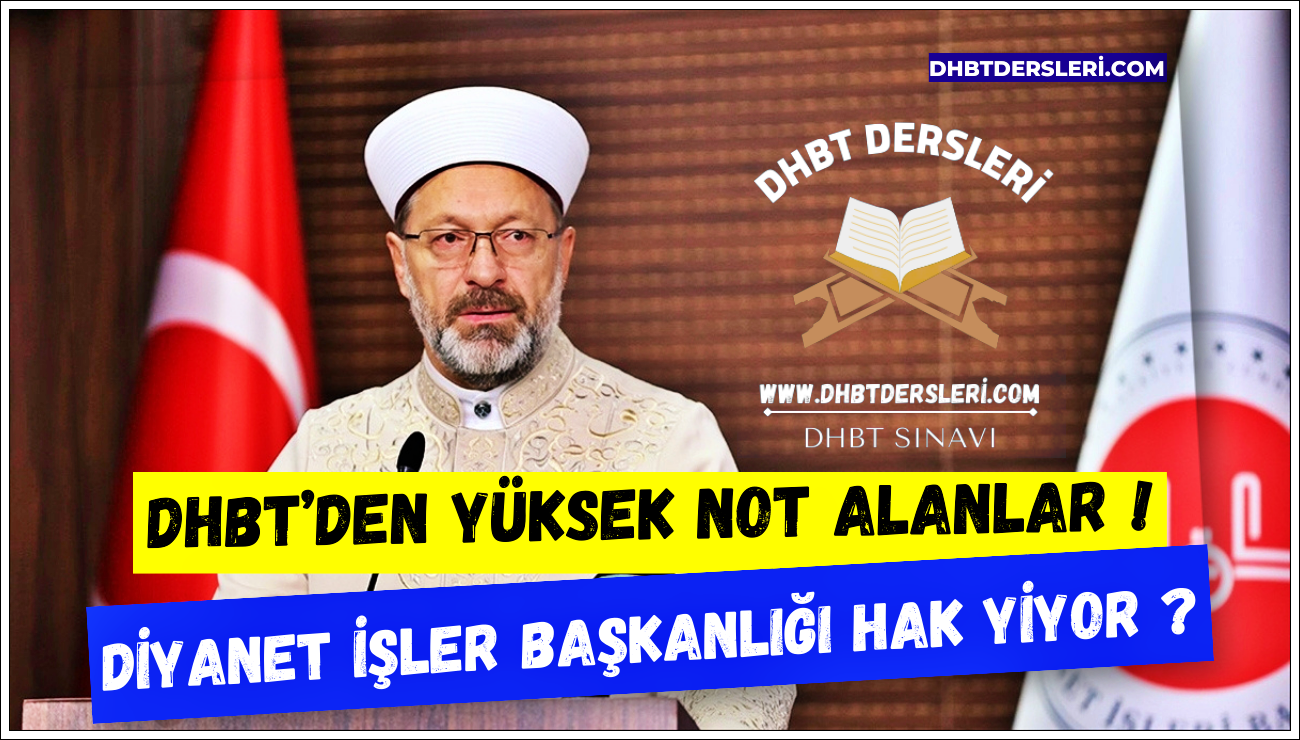The advice in the divine revelation is monogamy under normal circumstances: “If you have reason to fear that you might not be able to treat them with equal fairness, then [only] one – or [from among] those whom you rightfully possess” (Nisa’ 4:3).
What is the Islamic viewpoint on polygamy?
However, polygamy is permissible in exceptional circumstances, such as during times of war where the number of widows and/or orphan girls who need to be taken care of is disproportionately large (Nisa’ 4:3).
In the pre-Islamic society, no limitations were set on a man’s right to marry or on the number of wives he wanted to marry. Men used to marry as many women as they wished, looking after those they liked and abandoning the others. They invented unlawful and inhumane treatments in order to use women as they wished.
“Allah has indeed heard the words of her who pleads with thee concerning her husband, and complains Unto Allah. And Allah does hear what you both have to say: verily, Allah is all-hearing, all-seeing. As for those of you who [henceforth] separate themselves from their wives by saying, ‘Thou art as unlawful to me as my mother,’ [let them bear in mind that] they can never be [as] their mothers: none are their mothers save those who gave them birth: and so, behold, they but utter a saying that runs counter to reason, and is [therefore] false. But, behold, Allah is indeed an absolver of sins, much-forgiving: hence, as for those who would separate themselves from their wives by saying, ‘Thou art as unlawful to me as my mother,’ and thereafter would go back on what they have said, [their atonement] shall be the freeing of a human being from bondage before the couple may touch one another again: this you are [hereby] exhorted to do – for Allah is fully aware of all that you do. However, he who does not have the wherewithal shall fast [instead] for two consecutive months before the couple may touch one another again; and he who is unable to do it shall feed sixty needy ones: this, so that you might prove your faith in Allah and His Apostle. Now these are the bounds set by Allah; and grievous suffering [in the life to come] awaits all who deny the truth. Verily, those who contend against Allah and His Apostle shall be brought low even as those [evildoers] who lived before them were brought low after We had bestowed [on them] clear messages from on high. And [so,] for those who deny the truth there will be shameful suffering in store” (Mujadila 58:1-5)
In pre-Islamic society, one of these inhumane treatments constituted pronouncing an arbitrary oath known as “dhihar” on one’s wife. (Dhihar: an insult proffered by a husband upon his wife which likens the wife to some prohibited female relation of his and thereby is used to divorce the wife). The iniquitous custom of dhihar was condemned and abolished by the Qur’an (see Surah Al-Mujadilah, 2-4).
The Qur’an stands against this practice by requiring men who divorce their wives using dhihar to undertake redemptive action. In another words, dhihar is no longer considered a divorce as in pre-Islamic times, but is now seen as a reprehensible act, which must be atoned for by sacrifice and redemption (see Surah Al-Mujadilah, verses 1-5).
Why was Prophet Muhammad polygamous?
1. The Prophet’s polygamy was not due to human desire or lust. If it had been so, he would not have married 40-year-old Khadija when he was only 25. Khadija already had three orphan children and had been married twice before she wed the Prophet.
The Prophet’s monogamous marriage to Khadija lasted twentyfive years until Khadija’s death. How would those who claim the Prophet’s marriages were conceived due to lust explain why he spent twenty-five years of most fervent years of his life in a monogamous marriage with a woman who was already a mother of three and fifteen years his senior?
2. The Prophet’s polygamy had nothing to do with his prophethood. If it did, he would not have remained single for two and a half years after Khadija’s death and he would have not waited to marry Aisha until after the migration to Medina (hijrah).
3. The Prophet’s polygamy stems from his responsibilities as a leader. All of his marriages in Medina were motivated by compassion and were part of his mission, not a result of lust. When we examine the status of the women
Prophet Muhammad was married to, we have a better understanding of the purpose: Sawdah bint Zam’ah was the first woman whom Prophet Muhammad married after Khadija’s death. Sawdah was 50 years old at the time and had 6 children, her husband had died and she needed a safeguard.
Prophet Muhammad provided this through marriage. Aisha bint Abu Bakr was the only virgin whom Prophet Muhammad married. Although some reports suggest she was married to him in her young age, other reports indicate that she was a fully formed young woman in her late teens at the time of marriage.
Hafsah bint Umar al-Khattab was a 22-year-old widow when she married Prophet Muhammad. Her husband was martyred in the battle of Uhud and the Messenger married her in order to give solace to her and to honor her father Umar, a close friend and companion of Prophet Muhammad. Zaynab bint Khuzaymah had three marriages before she wed Prophet Muhammad. She did not have any children.
Her second husband died in the battle of Badr and the third died in the battle of Uhud. Umm Salamah was a widow who had been married more than once in the past before she married Prophet Muhammad.
She had five children from her previous marriages. Prophet Muhammad married her because she had become homeless with four young children in her care.
Zaynab bint Jahsh was a 36-year-old widow when she married the Messenger of Allah. The Prophet asked Zaynab to marry Zayd ibn Haritha (her first husband) in the past.
Zaynab married Zayd ibn Haritha not to let Prophet Muhammad down. She turned down all marriage proposals until the age of 35.
Juwayriyah bint Harith was a prisoner of war whose husband died in a battle against Muslims. The Prophet’s marriage to Juwayriyah was undertaken to establish ties of kinship and as a gesture of goodwill to her tribe.
The marriage was used to invite her people to Islam. Umm Habibah was a 38-year-old widow with children at the time of her marriage to Prophet Muhammad. Her husband left Islam and later died, leaving her alone with her children.
The Prophet married her out of compassion and again as a gesture of goodwill to her family who were heads of their tribe. Safiyyah bint Huyay was a widow with two previous marriages. She was the daughter of the chief of the Jewish tribe Banu Nadir.
She was captured in a war and subsequently emancipated. Maymuna bint Al Harith married Prophet Muhammad when she was 36 years old.
She had been married twice before. The Messenger of Allah married her in Mecca whilst he was performing an ‘umrah, once again as a gesture of goodwill to the people of Mecca.
Rayhana bint Zayd was a widow and a prisoner of war at the time of her marriage to the Messenger. She became a Muslima, and her conversion led her tribe to embracing Islam.
Maryam al-Qibtiyyah: Muqawqis, the vicegerent of Byzantine in Egypt, sent Maryam to Prophet Muhammad. According to several sources, she accepted Islam on her way to Medina.
The Messenger of Allah married Maryam and she gave birth to a son. Taking all the information above into consideration, it becomes obvious that Prophet Muhammad’s polygamy was not a result of lust but was undertaken out of compassion and as a means of invitation to Islam.

